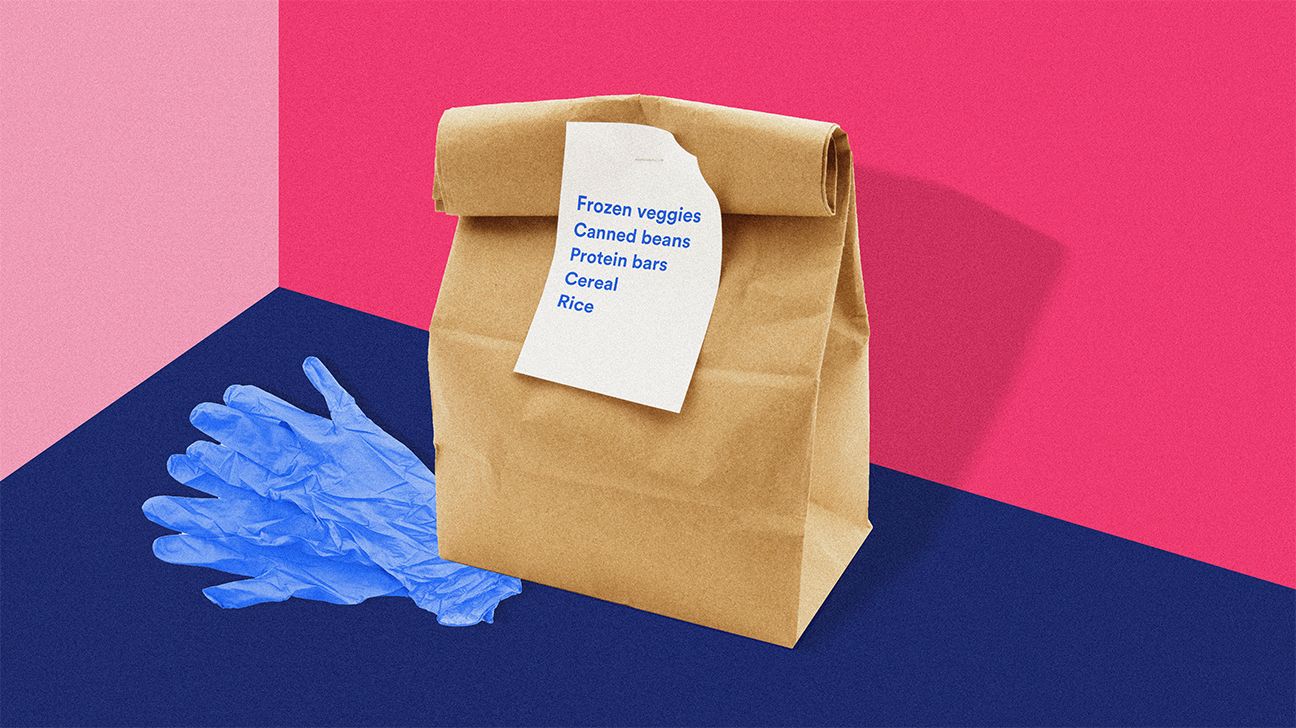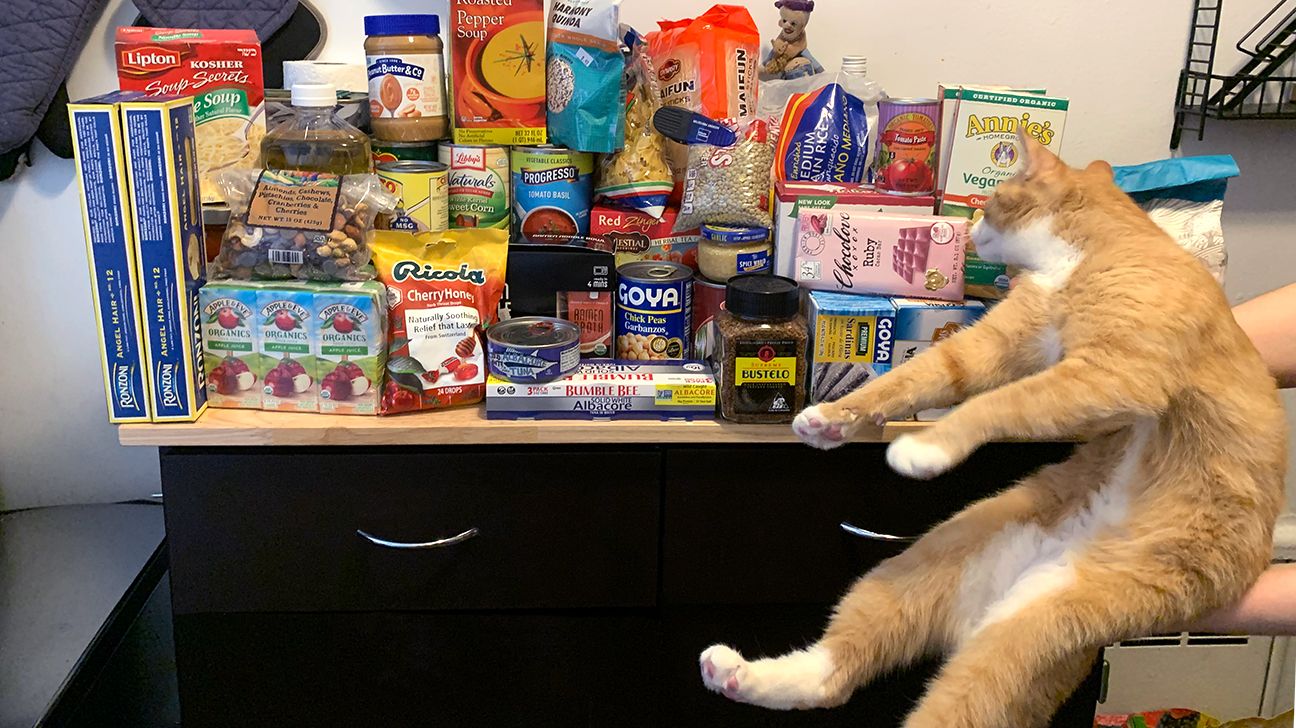The CDC recommends that all people wear cloth face masks in public places where it’s difficult to maintain a 6-foot distance from others. This will help slow the spread of the virus from people without symptoms or people who do not know they have contracted the virus. Cloth face masks should be worn while continuing to practice social distancing. Instructions for making masks at home can be found here.
Note: It’s critical to reserve surgical masks and N95 respirators for healthcare workers
If your city or county hasn’t put forth a lockdown or shelter-in-place order like the Bay Area has, this might be the time to overreact — not panic, just overreact. As many have said, in a pandemic, an overreaction will feel like an underreaction if we do it right.
“[Knowing the] possibility that people might be spreading COVID-19 around while being asymptomatic […] it’s more important than ever to be careful,” says Allison Clayton, a healthcare worker at a New York hospital.
“I’m of the current frame of mind that we’ve all been exposed and we need to act as though we could potentially pass it on. Proper hand hygiene and respiratory hygiene in public should be equally as stringent in the privacy of your own home, especially if you have at least one other person living with you.”
So overreacting, in this case, also means thinking about how your reactions might be negatively impacting other people — especially people with disabilities, people from low-income households, older adults, people with families and children, or anyone without reliable access to goods.
It’s not just about 14 days or more of self-isolation, it’s also about how we prepare and leave enough for others.

So to keep us all on the same page, ready to be kind to ourselves and each other, we put together a thorough guide for meeting one of our most basic human needs: food.
(P.S. We highly recommend taking as much time as you can to figure out budgeting before you go out.)
It’s important to weigh what the best options are for you and what the least risky options are for both you and others.
Good rules of thumb:
- Make a list of what you have, what you normally eat, and how many people are eating,
- Stock up on 2–3 weeks of food, medication, toiletries, and/or cleaning supplies.
- Eat perishables your first week.
- Buy nonperishables in bulk if you’re on a budget.
- Avoid foods labeled “WIC,” because people who participate in the USDA’s nutrition program for women, infants, and children have limited options and may need these items.
Can you order grocery delivery online? Do you have the time and budget to meal-prep and freeze instead of relying on frozen and canned foods? Do you already have enough toilet paper to last the month? What about snacks or treats for moments for comfort? These are all things to consider.
While we can’t tell you exactly what to buy without looking at your pantry, here’s a good list to start with:

| Food | Medicine | Hygiene | Additional |
| Cereals and oatmeal | Pain relievers like Tylenol | Paper towels | Baby food or formula |
| Protein bars, granola bars, nuts, or trail mix for snacks | Cough medicine and cough drops | Toilet paper | Pet food |
| Fruits (canned, dried, frozen, or precut) | Allergy medicines | Hand, dish, and bar soaps | Baking supplies |
| Vegetables (canned or frozen) | Band-Aids | Hand sanitizer | Ice cream and other treats |
| Canned soup, stock, and chili | Vitamins, like vitamin D and B-12 | Sanitizing wipes | |
| Canned beans | Shampoo/conditioner | ||
| Freezable goods (ravioli, premade dinners, veggies) | Toothpaste | ||
| Eggs and meats | Laundry detergent | ||
| Rice, quinoa, farro, barley, pasta | Detergent for sink or tub washing | ||
| Shelf-stable pasteurized milk | |||
| Nut butters for protein |
According to Paul Dawson, a professor in food, nutrition and packaging sciences and the author of Did You Just Eat That?, shelf dates are just on the label to help you maximize quality. For everything except baby food, the numbers are not law. Remember this as you go down the aisle when choosing what to buy.
Dawson’s nonperishable purchase tips:
- Aim for foods that don’t require refrigeration.
- Avoid food that will spoil or expire quickly.
- Stick with dried, canned, and powdered foods.
- Frozen fruits and veggies are just as nutritious as fresh.
If you’re part of a group who can’t afford to self-quarantine, having 2 to 3 weeks’ worth of food is important in case you do get sick.
If you’re part of a high-risk population (older adults, immunocompromised people, or people grocery shopping for children), stick to nonperishables to reduce the number of times you need to leave the house.
If you’re healthy and planning to self-quarantine, then it’s likely you’ll be able to visit the grocery store every few weeks. (Grocery stores won’t close during a lockdown or always be this empty.)
If this applies to you, try to buy fresh produce to eat for your first week while slowly stocking up on nonperishables over time so others can have access.
If nonperishables are sold out, here’s what you can buy and make last:
| Food | How long | Extend life |
| Pasteurized milk | 5–7 days after its sell-by date | 3 months, frozen |
| Beef | Eaten or frozen within 2 days of purchase | 4–12 months, frozen |
| Poultry and chicken | Cooked or frozen within 2 days of purchase | 1 year, frozen |
| Canned food | 12 months below 75ºF | |
| Dry goods (cereal, oatmeal, cake mixes) | 2–3 months, opened | 6 months, unopened |
| Oranges | 2 weeks | 21–30 days in fridge |
| Cabbage | 2–3 days if cut | 2 months in fridge |
| Onions | 30–60 days | 1 year in dry storage |
| Potatoes | 1–2 weeks | 2–3 months in dry storage |
| Cheese | 3–4 days | |
| Eggs | 30 days |
For more specifics, see the FDA’s cold food storage chart.
If you’re cooking and trying new recipes for the first time, it’s important to look up food safety tips and make sure you’re cooking things at your skill level.
Buying a whole chicken may be cheaper, but now is not the time to give yourself food poisoning while trying to emulate Claire Saffitz from Bon Appétit — trust us.
Extra food safety tips:
- Defrosting meat: The safest way to thaw any kind of meat is to defrost it in the fridge, not on the counter where bacteria may spread. You should also avoid washing meat, since this might spread bacteria to other surfaces and foods.
- Precooked foods (like deli meat and hot dogs): These are susceptible to listeria, so pregnant people, older adults, and immunocompromised people should avoid them. But they are safe for those populations to eat if they’re heated to 165°F beforehand.
It’s totally normal if your bank account isn’t pandemic-ready. Many people are experiencing this anxiety, says Berna Anat, financial hype woman and consultant.
Some foods are easier to bulk-buy and prepare, like soup, pastas, and stir-fries. If you’re worried about money, buy what you can and be smart about what gives you the most bang for your buck.
“Budgeting for quarantine is a math game. For food, my meal-prep folks will thrive, but those of us who are new to meal prep? Welcome to the cult — I mean, club!” says Anat. “Your biggest expense will be food, and the key is to buy in bulk, keeping in mind certain meals that you can repeat across all of your breakfasts, lunches, and dinners.”
According to Jeremiah Warren, a pandemic prepper in Los Angeles who prepared for Y2K, if you can’t find food, your best bet might be to go to Asian grocery stores, as they’re more likely to be stocked with food currently. When he went shopping, he focused on goods he could keep for a while.
“I got canned beans, peas, and corn. I bought a bit of frozen meat (mostly chicken breasts), some bacon to freeze, and a lot of dried beans and rice. I bought several cases of plain oatmeal, Top Ramen, and some canned chicken noodle soup, which I’ll add rice to if I end up needing to eat it.” He spent about $350 for a few weeks of food.
Another millennial prepper, Alice Chuang, who lives in the Bay Area, has been taking COVID-19 seriously and stocking up for the last month. Chuang is immunocompromised and has to be more wary of the disease. Stocking up is one way she thinks even more critically about how to prepare to stay at home to protect herself.
“At that point, we bought maybe one extra bag of pasta and some canned vegetables that we’d normally not have purchased every time we regularly went to the grocery store,” Chuang says. She and her fiancé also bought all the same essentials Warren stocked up on, including pasta, veggies, and meat to freeze.
Alaina Lavoie, an immunocompromised person living in Boston, went to Trader Joe’s to get more prepared foods and easy meals.
“That was the only difference in our shopping: We did buy more easily prepared meals than we normally would, to prepare for fewer takeout/delivery options, which I often use when I don’t have the spoons to cook,” Lavoie says.
Ultimately, everyone’s diet is different, but at times when stockpiles may run low, it’s time to think about how other people may be eating.
If you need to stretch out what keeps your body running, make sure you have protein (mostly nonperishables like beans or canned fish) and carbs. And don’t skimp on teas or whatever it takes to keep yourself drinking liquids.
Maybe we’ll all come out of this more hydrated than ever (one can hope).
Elly is a New York-based writer, journalist, and poet who also loves to host parties for her friends. Primarily, she’s Brooklyn’s resident pun enthusiast. Read more of her writing here or follow her on Twitter.

